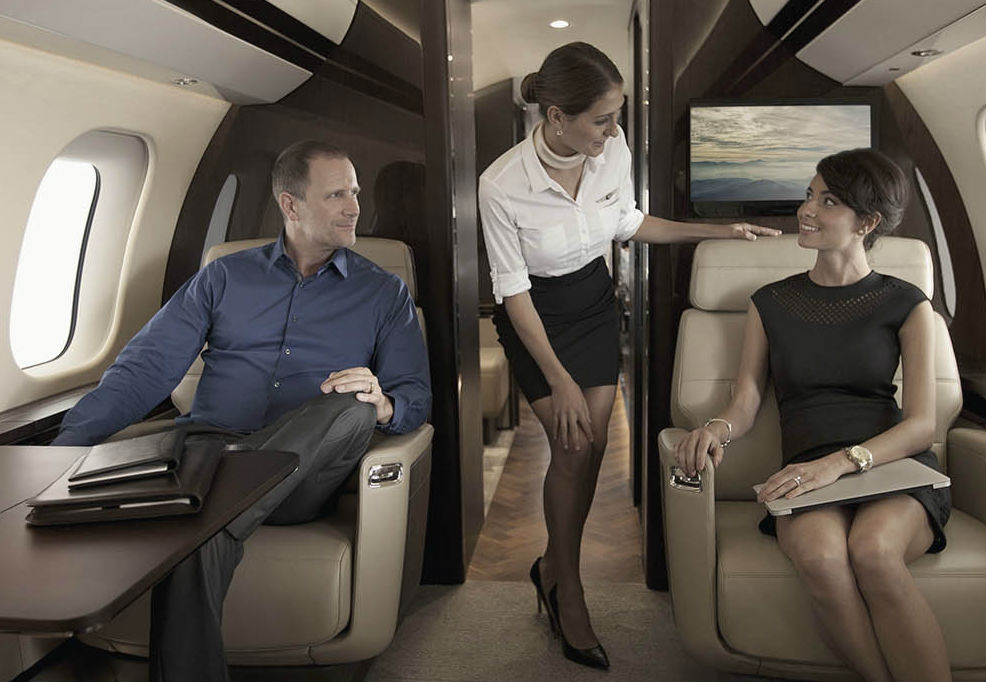Estimated reading time 5 minutes, 48 seconds.
The corporate aviation community has until Aug. 28 to provide feedback to the Canada Revenue Agency (CRA) on a policy proposal which could have a severe financial impact on how the use of a company aircraft is taxed.

The potentially bad news was delivered by Jamieson Collins of Jamieson Collins & Company, a Toronto lawyer whose practice includes tax, corporate and aviation law, as well as Steven Sitcoff, a lawyer at tax firm Spiegel Sohmer. The two lawyers travelled to the Canadian Business Aviation Association (CBAA) convention and exhibition, held last week in Abbotsford, B.C., to make a presentation to association members.
It’s the latest development in a long-running discussion the industry is having about what it sees as a dangerous lack of predictability and uniformity in how business aircraft and their uses are treated by the CRA. It came to a head more than a year ago, when the CRA implemented a new assessment policy which substantially increased the taxable benefits related to non-business use of aircraft.
Collins explained Aug. 11 that after a year of back-and-forth discussions, the CRA had provided him with a verbal briefing outlining a draft policy which proposes three scenario-based categories of use.
“There’s some good, there’s some bad, some very bad,” he told CBAA members.
One scenario has a chief executive officer (CEO), having worked long hours for his or her company, asking their spouse to accompany them on a trip to New York from Toronto. “How do you value that benefit?” asked Collins.
The CRA’s approach is that the value should be equivalent to the cost of a business class airline ticket, an approach Collins agreed was “reasonable . . . and easy to administer” as long as the CEO involved is not the person in the company who controls access to the aircraft for personal travel.
The second scenario has a CEO and spouse travelling to Paris for exclusively personal purposes. In the past, the CRA would equate the benefit to the cost of a business class ticket, roughly $7,000 each, whereas the cost of a charter for the same trip could be $100,000.
The CRA now is considering whether to apply the full charter-equivalent cost in such cases, which would result in a taxable benefit of some $54,000. “That’s reasonable and that assumes, again, that the person receiving the benefit is not someone who controls access to the aircraft,” said Collins.
However, he has serious issues with the third CRA scenario, which would involve use of a company aircraft by the person who controls the access and use of that aircraft.
Essentially, if the aircraft logs 100 hours annually, 20 of them for personal use, “the CEO would be assessed 20 per cent of the value of the overall operating cost of the aircraft for the year.”
Moreover, the CRA also wants to incorporate the capital cost of the aircraft–Collins used a Bombardier Challenger 650 as an example–to which the CRA would add a prescribed rate of interest. Using that example, on the original capital cost of $30 million, the CRA would calculate a six per cent prescribed rate of interest, equating to $1.8 million, and the CEO would then pay their pro-rated share based on their percentage of use during the taxation year.
Collins suggested that the CRA is double-dipping by proposing to assess an aircraft’s variable operating as well as fixed costs in a company’s tax year. “If you divide the number of hours of flying by the overall operating costs of this aircraft, the amount per hour would be more than you could rent the airplane for . . . .
“My position to the Canada Revenue Agency is that the available for use benefit is already captured . . . and there’s no reason to charge the available for use benefit.”
When he asked CRA whether its proposed policy would be retroactive, the agency evidently said that it would not reopen files it had closed, but “anybody who’s got an active audit, who is filing a notice of objection or gives them a cause for litigation” could find themselves targeted.
Collins said the CBAA and other stakeholders had until Aug. 28 to consolidate their comments and positions with a view to influencing the CRA’s final policy.
At the conclusion of the briefing, CBAA president Rudy Toering asked Collins to prepare a written outline of the proposed policy for distribution to association members. That outline was distributed to members on Aug. 16. Anyone who has input to share should email their comments to Toering at rtoering@cbaa.ca.









Simply lease a private service, fly anyone you like on board, expense the total cost back to the firm as a travel related expense. Presto…problem fixed. CRA won’t be able to do anything either,